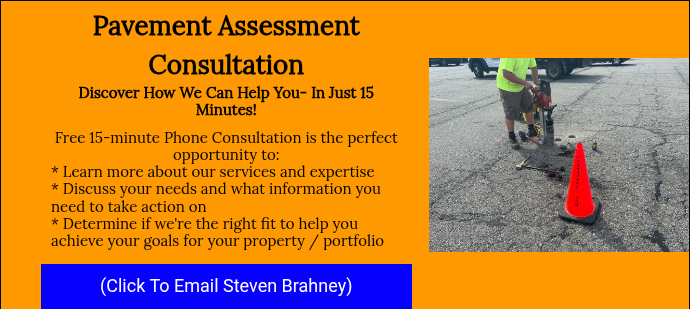🐊 Why Does Asphalt in North Carolina Crack So Badly? Blame the Red Clay — Here’s How to Fix It
If you manage a commercial property, HOA, or apartment complex in North Carolina, you’ve likely seen it before:
✅ A parking lot or driveway that was paved just a few years ago…
❌ Now riddled with alligator cracks, ruts, soft spots, and premature failure.
Dealing with these issues can be incredibly frustrating and financially burdensome for property managers and owners. The costs associated with frequent repairs and maintenance can quickly add up, straining budgets and resources. However, the underlying cause of these persistent problems is often overlooked or not openly discussed by many contractors. The true culprit lies beneath the surface, hidden from immediate view.
The red clay soil under your asphalt.
The Problem: Red Clay Soil = Unstable Foundation
North Carolina is known for its beautiful landscapes — and its notoriously tricky red clay. While it might look solid when dry, red clay is a poor subgrade for asphalt for several reasons:
-
It expands when wet and shrinks when dry, creating constant movement below your pavement.
-
It holds water like a sponge, saturating the base and softening the support structure.
-
It has poor drainage, especially in low areas or older developments with insufficient underlayment.
Over time, this leads to the dreaded:
-
Alligator cracking
-
Pavement depressions
-
Edge cracking
-
Potholes and base failure
What Is Alligator Cracking, Really?

Alligator cracking isn’t merely a superficial concern; it represents a critical structural failure within the asphalt. Much like a heart attack in the human body, it serves as a dire warning that the underlying foundation has compromised its integrity. This type of cracking indicates that the subgrade has lost its ability to support the pavement above, leading to a network of interconnected cracks that resemble the scales of an alligator. Such a condition suggests that the base layer has become unstable, often due to moisture infiltration or inadequate compaction, and requires immediate attention to prevent further deterioration and costly repairs.
You can sealcoat all you want, but if the base is saturated or moving, it’s only a matter of time before cracks reappear.
The Fix: How to Remediate and Strengthen Asphalt Over Red Clay In North Carolina:
Here are proven engineering-based solutions we use across North Carolina to fix the root cause — not just the surface:
1. Underdrain Systems


Installing perforated pipe systems beneath the pavement helps redirect water away from the subbase — a must in areas with poor drainage or slope.
💡 Bonus: Proper underdrains reduce frost heave and minimize water intrusion year-round.
2. Soil Stabilization / Soil Cement


Instead of removing all the red clay, we can mix it in-place with cement powder (or other stabilizing agents) to harden the subgrade and improve its load-bearing capacity.
This creates a more durable base that’s less prone to shifting and moisture damage.
3. Geotextile Reinforcement


In some cases, we install a fabric or grid layer between the subgrade and the stone base to prevent movement and cracking from traveling upward into the asphalt.
4. Proper Grading + Stone Base Depth
In many red clay areas, contractors skimp on base thickness to cut costs. We recommend increasing the stone base to a minimum of 6–8 inches and ensuring the base is compacted in lifts, not all at once.
🚫 What Not To Do:
-
Don’t just apply a thin overlay or patch — it won’t last more than 1–2 seasons.
-
Don’t let a low-bid contractor pave over clay without testing or drainage.
-
Don’t ignore standing water or ponding — it’s a sign of bigger issues underground.
What We Recommend
At FixAsphalt.com, we specialize in long-term pavement solutions across North Carolina. If you’re seeing signs of alligator cracking, rutting, or base failure — we can assess your site and provide a plan that actually addresses the cause, not just the symptoms.
Our team will:
-
Conduct a full pavement & subgrade evaluation
-
Check for drainage issues and base movement
-
Recommend proven soil stabilization or underdrain strategies
-
Provide a tailored scope of work designed to extend your pavement’s lifespan 10–20 years
🎯 Final Thoughts
Red clay isn’t going anywhere — but that doesn’t mean your asphalt has to fail.
Whether you’re dealing with early-stage cracking or full-depth pavement failure, there’s a science to building asphalt that lasts in North Carolina. And it starts below the surface.
Need help assessing your asphalt condition?
📅 Schedule a site walk-through with our NC team and we’ll show you exactly what’s going on beneath your lot — and how to fix it right the first time.
#asphaltpaving #northcarolinaasphalt #alligatorcracks #pavementfailure #propertymanagement #fixasphalt #soilstabilization #underdrainsystem











Leave a Comment